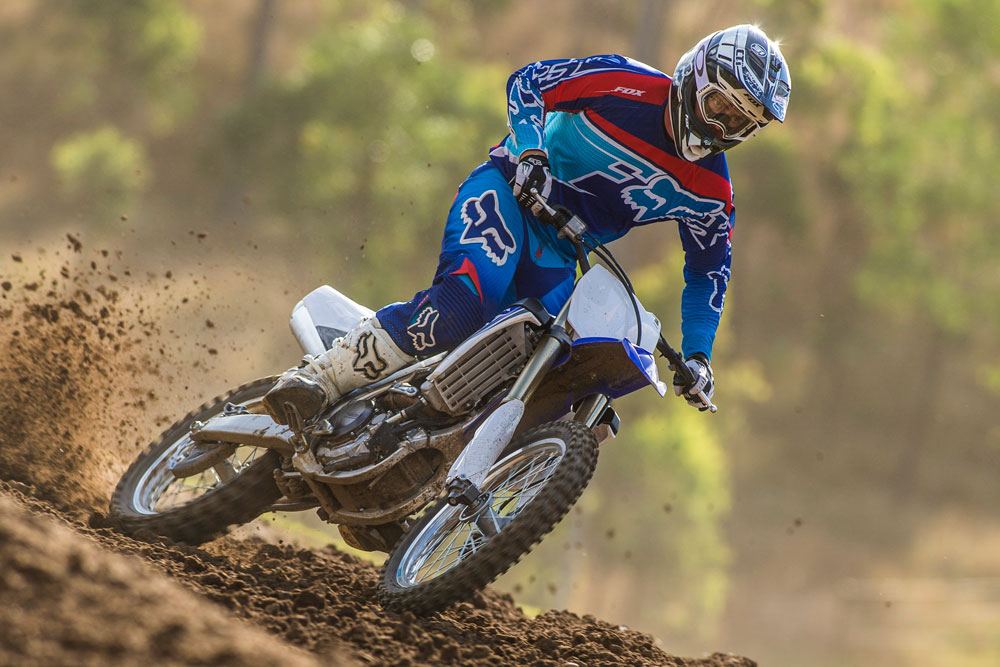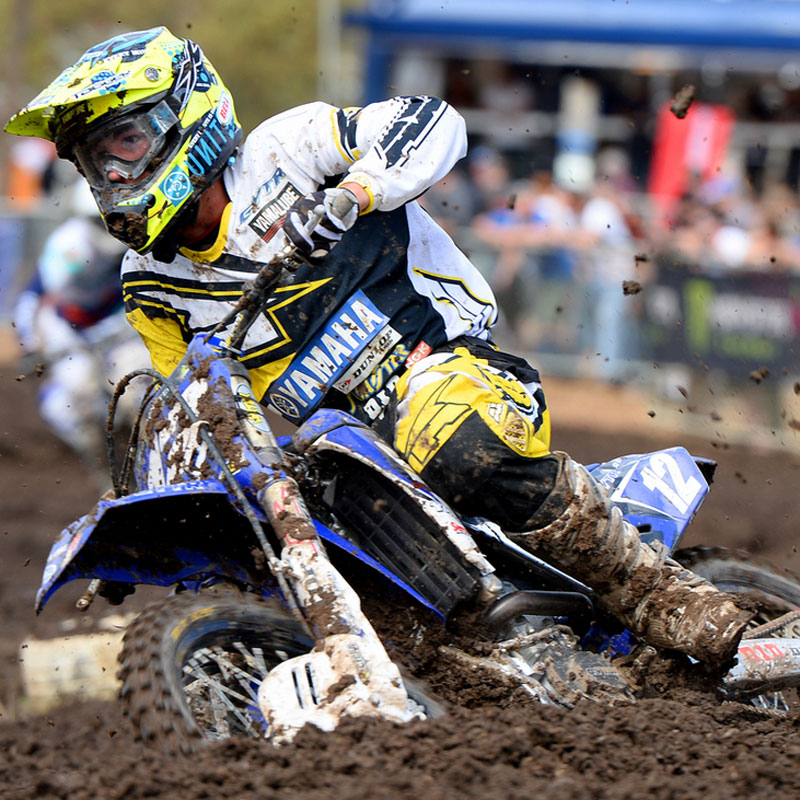
In some situations it’s beneficial to remain standing through a turn. It can feel awkward at first but with practice it’s a handy technique to have in your arsenal.
STORY SHANE BOOTH | PHOTOGRAPHY iKapture

WHEN WOULD YOU?
Choosing when to remain standing through a turn is the first step to this technique. There are all sorts of reasons why you might stay up on the pegs but here are a few of the more common ones.
A rough corner: When the surface gets so rough that trying to ride through it seated just doesn’t work or allow you to carry any speed.
Slight turns or kinks: If a corner is less than 90 degrees, quite often you are through it so quickly that it’s more efficient to just stay standing.
Obstacles after the turn: When you have an obstacle immediately following a turn that requires you to stand up it can be hard to find the time to get off the seat before it.
HOW DO YOU DO IT?
In this instance I have remained standing through a left-hand kink that rolled over into a downhill section of track that required some heavy braking at the bottom of it. It was much more efficient to remain standing here as the turn was less than 90 degrees and it headed straight into the downhill section that I needed to stand for, anyway.
When you stand through a turn like this, you want to stay central on the bike as far forward to back weight distribution. A good way to check this is by making sure your head remains over the handlebars. Even though you are standing, you need keep the front wheel loaded up to steer the bike through the turn.
It’s also important when you start to accelerate out of the turn like I do in this photo. You can see, the front wheel is very light and may even be just off the ground as I wind the power on. At this height it’s controllable with throttle and clutch if needed. If you let your weight go back any further when you’re standing, it’s very easy for the bike to get away on you and end up in a huge wheelie under power.
I’m gripping the bike with my knees and most of my weight is down through the outside footpeg at this point to try to maintain traction and avoid the rear wheel sliding out. Take note of the position my hand is in on the throttle. I’ve turned it slightly sideways so I can turn the throttle without having to drop my whole arm. If your arm drops at this point it will most likely cause you to let your weight fall back. I also have a finger over the clutch just in case I need to use it to control wheelspin or excessive drive that might cause a wheelie.
Select a gear that will get you all the way through and out of the turn because, once you are standing, it’s difficult to shift up a gear. Your throttle control should be smooth and rolled on in one application.
Keeping your vision up and looking ahead is important, as always. Just be aware that when you stand up you can easily fall into the trap of looking just in front of your front wheel. Tilt your head up and look through and out of the turn.



